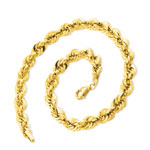 Gold was one of the first known metals used in jewelry making. It won’t tarnish, rust, or corrode, and though it is very strong, it is also one of the most malleable of all metals. Pure gold is too soft for every-day wear, so it is alloyed with a mixture of metals like silver, copper, nickel, and zinc to give it strength and durability.
Gold was one of the first known metals used in jewelry making. It won’t tarnish, rust, or corrode, and though it is very strong, it is also one of the most malleable of all metals. Pure gold is too soft for every-day wear, so it is alloyed with a mixture of metals like silver, copper, nickel, and zinc to give it strength and durability.
Carat (ct) is a unit of weight used to measure the size of gemstones. Karat (k) refers to the percentage of pure gold in an item, and it is not a measure of weight.
• 24k is 100% pure gold, but is soft and not recommended for jewelry
• 22k is 91.7% gold and is rarely used for jewelry in this country
• 18K is 75% gold and is used commonly in jewelry
• 14K is 58.3% gold and is most commonly used for jewelry in American markets
• 10k is 41.7% gold and is used for jewelry most commonly in men’s and children’s jewelry
Gold jewelry can be made in yellow, white, rose and even green colors. The color is determined by the type and percentage of the metal alloy added to the pure gold. For example, copper is added to give rose gold its distinctive color.
Even in yellow gold, it is not uncommon to see different colorations within the same karat gold percentage. This is reflective of what type of alloys is being used by the manufacturers.
White gold is an alloy of gold and white metals such as nickel, silver and palladium. Since it has a slight yellowish tinge, it is rhodium plated to give it a bright finish and protection. Over time this can wear away, and can easily be re-plated by your jeweler.
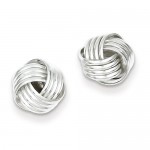 Pure silver is too soft for creating most jewelry, so an alloy is added to give it strength and durability. The most commonly used metal is copper which makes up 7.5%, and improves the metal’s hardness, yet does not affect the beautiful color. Although wearing your silver jewelry often is the best way to prevent tarnish from building up, regular cleaning of all your silver items will prevent tarnish and keep your silver bright and sparkling.
Pure silver is too soft for creating most jewelry, so an alloy is added to give it strength and durability. The most commonly used metal is copper which makes up 7.5%, and improves the metal’s hardness, yet does not affect the beautiful color. Although wearing your silver jewelry often is the best way to prevent tarnish from building up, regular cleaning of all your silver items will prevent tarnish and keep your silver bright and sparkling.
 Platinum is regarded as the preeminent metal for fine jewelry. It is 35 times more rare than gold, naturally white, and 90-95% pure .The white luster of platinum is unique, and forms a rich patina over time. It is almost twice as heavy as 14k gold, and is more resistant to wear and tear. The purity of this element makes it ideal for jewelry since it does not tarnish and is hypoallergenic. Platinum is so rare that all the platinum ever mined would fit into an average sized living room.
Platinum is regarded as the preeminent metal for fine jewelry. It is 35 times more rare than gold, naturally white, and 90-95% pure .The white luster of platinum is unique, and forms a rich patina over time. It is almost twice as heavy as 14k gold, and is more resistant to wear and tear. The purity of this element makes it ideal for jewelry since it does not tarnish and is hypoallergenic. Platinum is so rare that all the platinum ever mined would fit into an average sized living room.
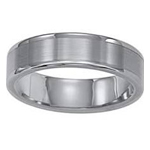 Tungsten and carbide powders are forged together at extremely high temperatures to form jewelry that is scratch proof and virtually indestructible. Tungsten is about 10 times harder than 18K gold, 5 times harder than tool steel, and 4 times harder than titanium. The lustrous look and solid weight of tungsten carbide makes it a common modern-day choice for a man’s ring.
Tungsten and carbide powders are forged together at extremely high temperatures to form jewelry that is scratch proof and virtually indestructible. Tungsten is about 10 times harder than 18K gold, 5 times harder than tool steel, and 4 times harder than titanium. The lustrous look and solid weight of tungsten carbide makes it a common modern-day choice for a man’s ring.
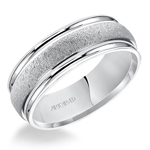 Titanium is the only element that offers the unique combination of beauty, strength, lightweight and bio-compatibility. Titanium is inert and completely corrosion resistant, therefore it is the preferred material for surgical instruments and implants. Since it has the strength of steel, but with a weight comparable to aluminum, it has a variety of uses from forming the structure of the space shuttle to the frames of tennis racquets.
Titanium is the only element that offers the unique combination of beauty, strength, lightweight and bio-compatibility. Titanium is inert and completely corrosion resistant, therefore it is the preferred material for surgical instruments and implants. Since it has the strength of steel, but with a weight comparable to aluminum, it has a variety of uses from forming the structure of the space shuttle to the frames of tennis racquets.
With many leading designers using titanium, it is at the forefront of the jewelry industry, since it provides the stylish rich grey tones of platinum at a much more attractive price. The dramatic rise in popularity of titanium eclipses that of any other metal being used today. The metal’s virtual indestructibility makes a singular statement about commitment.
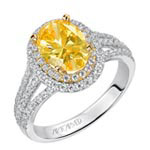 As a member of the same metal group, palladium has the same high purity, white appearance and natural white luster as platinum. If you desire a piece of jewelry that has the luxurious look and feel of platinum, but at the cost of white gold, then palladium should be a consideration. It is also tarnish resistant and hypoallergenic unlike white gold, and has no need for rhodium plating. It is more precious than silver, and half the weight of platinum, which makes it a good choice for gemstone jewelry. Because of all these benefits, palladium could be the next sensation in jewelry design
As a member of the same metal group, palladium has the same high purity, white appearance and natural white luster as platinum. If you desire a piece of jewelry that has the luxurious look and feel of platinum, but at the cost of white gold, then palladium should be a consideration. It is also tarnish resistant and hypoallergenic unlike white gold, and has no need for rhodium plating. It is more precious than silver, and half the weight of platinum, which makes it a good choice for gemstone jewelry. Because of all these benefits, palladium could be the next sensation in jewelry design
